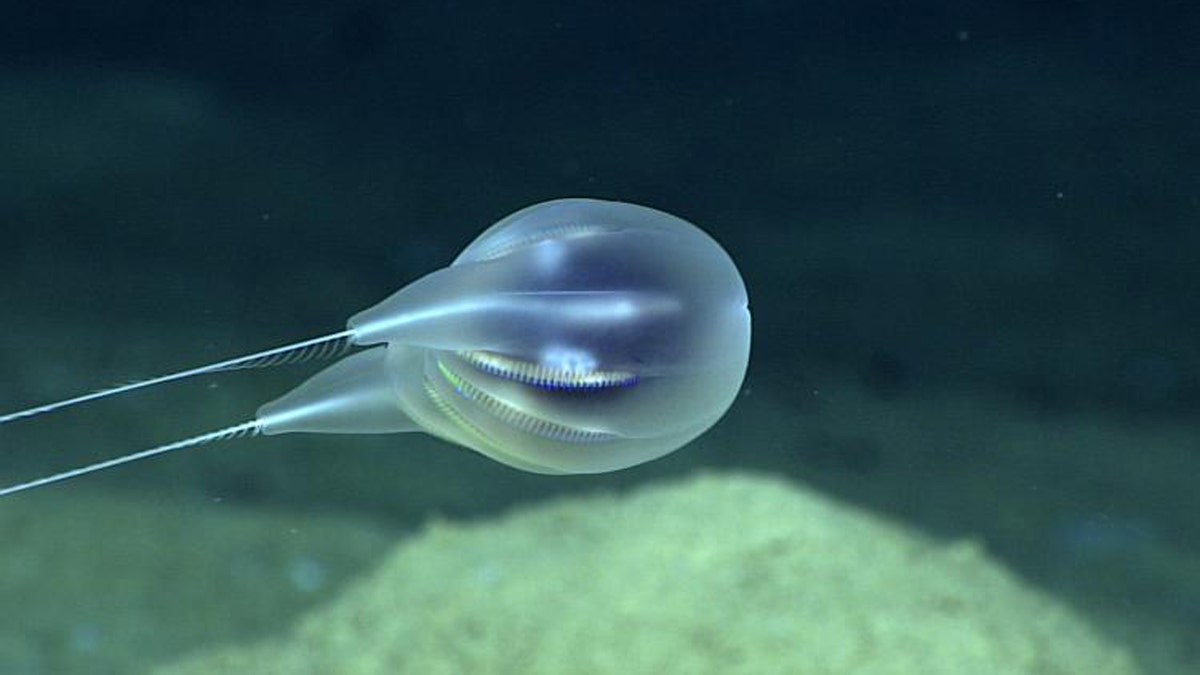Human-sized jellyfish lurking off English coast stuns divers
A human-sized jellyfish lurking off the coast of the English Channel stunned divers who said, ‘it’s an experience we’ll never forget.’
Scientists have discovered a new blob-like species of ctenophore, or comb jelly, off Puerto Rico.
The creature, named Duobrachium sparksae, was first spotted during a 2015 dive led by the NOAA Office of Ocean Exploration and Research.
An undersea drone captured high-definition video of the comb jelly during the dive. “NOAA Fisheries scientists Mike Ford and Allen Collins, working shoreside, spotted it and recognized it as novel,” said NOAA, in a statement. “This marks the first time NOAA scientists exclusively used high-definition video to describe and annotate a new creature.”
The discovery, which follows years of analysis, is described in the journal Plankton and Benthos Research.
STUNNING VOLCANIC 'LOST WORLD' DISCOVERED DEEP IN THE OCEAN
However, no physical samples of the comb jellyfish have been taken. “It’s unique because we were able to describe a new species based entirely on high-definition video,” said Collins, in the statement. “The cameras on the Deep Discoverer robot are able to get high-resolution images and measure structures less than a millimeter. We don’t have the same microscopes as we would in a lab, but the video can give us enough information to understand the morphology in detail, such as the location of their reproductive parts and other aspects.”

The new species of ctenophore, or comb jelly, was discovered off the coast of Puerto Rico. (NOAA)
The animal is about 6 cm (2.4 inches) tall and its tentacles are about 30 cm (11.8 inches) long.
“The ctenophore has long tentacles, and we observed some interesting movement. It moved like a hot air balloon attached to the seafloor on two lines, maintaining a specific altitude above the seafloor,” Ford said. “Whether it’s attached to the seabed, we’re not sure. We did not observe direct attachment during the dive, but it seems like the organism touches the seafloor.”
NOAA notes that, although they look similar, comb jellies and jellyfish are not closely related.
CLICK HERE TO GET THE FOX NEWS APP

The new comb jelly species has been described as resembling a hot air balloon. (NOAA/Illustrations by Nicholas Bezio.)
Both comb jellies and jellyfish are 95 percent water, according to the Smithsonian. “Comb jellies are named for their unique feature: plates of giant fused cilia, known as combs, which run in eight rows up and down their bodies,” the Smithsonian explains, on its website. “Compared to jellyfish, there are far fewer species of ctenophores: only 100-150 species have been found, but quite a few are out there yet to be discovered and fully documented.”
Follow James Rogers on Twitter @jamesjrogers





















